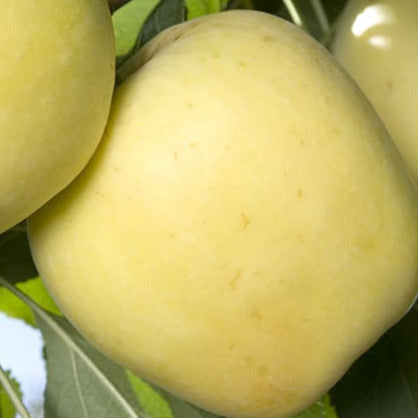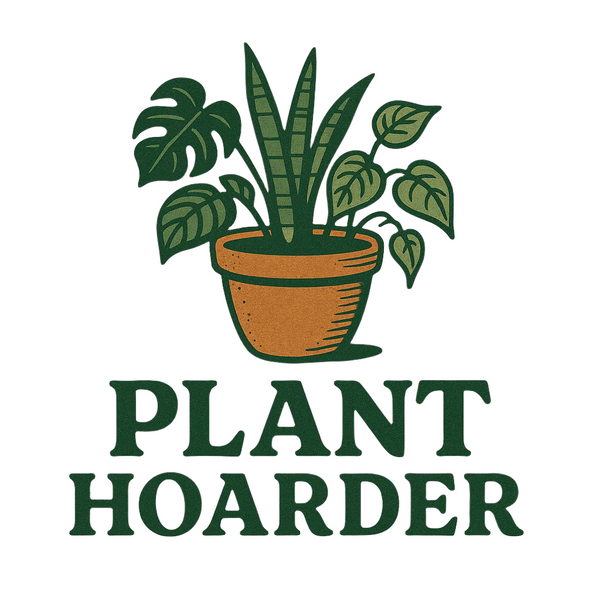Plant Hoarder
Apple, Dorsett Golden
Apple, Dorsett Golden
Couldn't load pickup availability
Share
Hardiness Zone:4, 5, 6, and 7
Sun Exposure:Full Sun
Apple 'Dorsett Golden' on Geneva® 969 Rootstock — Easy to Grow, Early to Enjoy
If you're dreaming of sweet, crisp apples early in the season, the ‘Dorsett Golden’ apple tree is the one for you. When paired with the Geneva® 969 rootstock, you get a powerhouse combination—fast fruiting, compact size, and disease resistance. Whether you're a seasoned orchardist or a backyard grower looking for your first apple tree, this pairing makes success simpler.
Let’s walk through what makes this tree special and how to grow it with confidence—from planting your bare-root tree in winter to enjoying your first crisp bite in summer.
Why Choose 'Dorsett Golden'?
‘Dorsett Golden’ is one of the few low-chill apple varieties—meaning it doesn’t need a cold winter to set fruit. It thrives in warm climates, especially across the southern U.S. and coastal regions. It’s famous for:
-
Very early ripening — fruit is often ready by June or July
-
Beautiful golden-yellow skin with a pink blush
-
Sweet, firm flesh that’s perfect for fresh eating
-
Low chill requirement — only 250–300 chill hours!
This makes it ideal for USDA Zones 5–9, especially in areas where most apples struggle.
Geneva® 969 Rootstock: Compact and Strong
Now, let’s talk about the rootstock: Geneva® 969. This is a semi-dwarfing rootstock that brings some amazing benefits:
-
Mature tree height: 10–12 feet with pruning
-
Excellent resistance to fire blight and crown rot
-
Early production — fruit within 2–3 years
-
Cold hardy and adaptable
You get a manageable tree that’s strong and productive. It’s great for small orchards, urban gardens, and even large containers if well supported.
Shipped Bare-Root: What That Means for You
Your apple tree ships bare-root and dormant during winter. That means:
-
No soil around the roots, making it lighter and easier to handle
-
No leaves during winter, so it focuses energy on root growth when planted. Trees will be leafed out during rest of year.
-
Longer roots, encouraging fast establishment
Once spring arrives, it will leaf out naturally and begin its active growing phase. Don’t be alarmed by the appearance when it arrives—it’s sleeping, not dead!
How to Plant Your 'Dorsett Golden' Bare-Root Tree
Planting is easy if you follow a few clear steps. You’ll be amazed at how fast it wakes up and grows!
When to Plant:
-
Best time: Late winter to early spring, while still dormant. Second best time, now!
-
Avoid frozen soil but plant before buds swell
Step-by-Step Guide:
-
Soak the roots in water for 4–6 hours before planting.
-
Dig a hole twice as wide as the root spread and deep enough for the roots to sit naturally.
-
Position the graft union (where the tree meets the rootstock) 2–3 inches above the soil line.
-
Backfill gently, removing air pockets and making sure the roots are well spread.
-
Water thoroughly after planting.
-
Mulch around the base—but not against the trunk—to keep roots cool and moist.
Tip: Stake your young tree if you're in a windy area. Geneva® 969 is sturdy, but staking helps during the early years.
Growing and Caring for Your Tree
After planting, the real fun begins. With regular care, your ‘Dorsett Golden’ tree will reward you quickly.
Light:
-
Full sun is a must—at least 6–8 hours a day
Water:
-
Water deeply once a week during the first year, more in hot climates
-
Let the soil dry slightly between watering
Soil:
-
Prefers well-draining soil, but tolerates a range of types
-
Slightly acidic to neutral pH is ideal
Fertilizer:
-
Apply a balanced fertilizer in early spring after bud break
-
Avoid over-fertilizing—too much nitrogen = fewer fruits
Pruning:
-
Prune in late winter while still dormant
-
Focus on creating an open center to allow light and airflow
-
Remove crossing or crowded branches
-
Thin fruit in early summer for better size and flavor
Real-world tip: Keep an eye out for suckers around the base. These can come from the rootstock and should be removed.
Pollination Tips
Here’s something important: ‘Dorsett Golden’ needs a pollination partner to produce the best crop.
Pair it with another low-chill apple like:
-
Anna Apple
-
Ein Shemer
These bloom at the same time and help ensure good cross-pollination, which leads to more apples!
Even if you’re short on space, you can plant two trees just 10–15 feet apart—or even consider a multi-grafted tree if available.
Harvest Time!
Here’s the best part: You don’t have to wait until fall.
‘Dorsett Golden’ ripens early to mid-summer, depending on your zone. The apples:
-
Have a refreshing sweetness—not too tart
-
Are great fresh, in salads, or for light baking
-
Store for 2–3 weeks in the fridge, but best eaten fresh
Look for a firm feel and full golden-yellow color with a hint of blush when ripe.
What to Expect Each Year
Here’s a rough timeline to guide your expectations:
Year 1: Establishment
-
Focus on root growth
-
May not flower, but leaves will flourish
Year 2: First Flowers
-
Small crop possible if pollinated
-
Focus on shaping the structure
Year 3–5: Fruiting Years
-
Expect full bloom and a good harvest
-
Prune annually and maintain feeding/watering
Why Gardeners Love It
Let’s wrap up with a few reasons this tree is loved by growers of all kinds:
-
Fast returns — fruit in just 2–3 years
-
Compact size — easy to manage, even in small yards
-
Sweet flavor — a favorite among kids and adults alike
-
Heat-tolerant and low chill — perfect for southern climates
If you’ve ever thought, “I’d love to grow apples, but my climate’s too warm,” the ‘Dorsett Golden’ on Geneva® 969 is your green light.
Ready to bring home a little golden sunshine? With the right start, a bit of care, and a sunny spot, your ‘Dorsett Golden’ apple tree will reward you with delicious fruit and years of joy.


